Review for The Big O: Anime Legends (3 Discs)
Introduction
Beez Entertainment were the last of the anime distributors in the UK to cotton onto the potential of budget re-releases, that's despite the fact that Bandai Entertainment have long since made anime fans smile with their Anime Legends line. Back when there were 2 dollars to the pound, I wound up with most of the Beez catalogue that appealed to me, in Anime Legends form from Bandai instead. The difference between the prices was that significant. But eventually, Beez hopped onto the budget boxset bandwagon, long after companies like Manga, ADV and MVM had been dancing to the tune, and 2010 saw some of their titles, like Wolf's Rain, and Witch Hunter Robin, re-released at around £25, where previously they would have set you back over three times as much. But Beez are nothing if not innovative, and they have realised that the Anime Legends label offers them an opportunity to get older Bandai titles that have never seen a UK release, out to UK audiences at an affordable price that reflects their venerable nature. After all, few people will be willing to pay full price for a show that has been available in the US for three years or more. Later this year, the UK will get its first taste of shows like Outlaw Star, and the long awaited fan favourite Lucky Star. Beez got the ball rolling late last year by bringing The Big O to the UK, straight to the Anime Legends label at a budget price.
The Big O is another of those gateway anime that I often mention, one of those shows that back in the day drew many fans to this exciting medium, through content, storytelling, style and production values, as well as by offering something that Western animation couldn't provide. In The Big O's case, it provided something that Western animation could provide, but in a way that offered something a little different. Watch an episode of The Big O, and you'll be hard pressed to immediately classify it as anime, indeed the style and even the characters will put you in mind straight away of the Batman cartoons. And it is easy to see why fans gravitated towards it. It's also easy to see why it had a major impact when it comes to television, one of the few anime in recent years that has done so. It turns out that this isn't exactly the Complete Collection, and that there is a Complete Collection of The Big O II available from Bandai. Fans appreciated this first series so much, when it debuted in 1999, that it was US investment from The Cartoon Network that led to the second series being animated in 2003. Hopefully Beez will release that second series here as well in the near future. Of course it was that gateway anime status, and that budget priced release that twisted my arm into trying this series. After all, it does have a giant robot in it. Giant robots usually make my interest wane with unseemly haste, but The Big O has one or two reasons why that may not happen in this case.
Paradigm City is a domed enigma. 40 years previously, something happened. No one knows what it was, but the results were all too evident. Everyone lost their memories. All of a sudden, no one knew who they were, or what their past had been. Given the wasteland that lies outside the city, and the evidence that no one else survives outside the domes, it must have been catastrophic. Still, life carries on, and even without memories, civilisation thrives and prospers within Paradigm. Of course with the trappings of a prosperous civilisation come the usual inequities, injustices and crime. Those crimes can be even more devastating when a Memory is involved, because on occasion, a lost memory resurfaces, whether it's in the mind of an individual, or some rediscovered document or piece of technology. That's where Roger Smith comes in, a negotiator by trade, and formerly an officer of the Paradigm Military Police; he works to resolve tense situations by peaceful means. That isn't always possible, so he has at his disposal a rather singular piece of lost technology himself, a Megadeus, a giant robot named The Big O. With his butler Norman, and his android maid R. Dorothy, he works to keep Paradigm City and its inhabitants safe. But some memories are better off forgotten.
13 episodes are presented across three discs from Beez Entertainment
Disc 1
1. Roger The Negotiator
2. Dorothy Dorothy
3. Electric City
4. Underground Terror
Disc 2
5. Bring Back My Ghost
6. A Legacy of Amadeus
7. The Call From The Past
8. Missing Cat
Disc 3
9. Beck Comes Back
10. Winter Night Phantom
11. Daemonseed
12. Enemy is Another Big!
13. R. D.
Picture
The Big O gets a pretty bog-standard 4:3 regular transfer, which given that it is an NTSC-PAL conversion, is run of the mill for anime. It's clear and well defined for the most part, if a little soft and prone to blended frames. Where The Big O does excel is in doing more for less. It's a spare and limited animation, with stylised world designs, and minimalist character designs. It's also not the most animated of animations, yet is stunningly effective when it comes to mood and atmosphere. The way the limited and downbeat colour palette, combines with the use of shadow and light, as well as the unconventional scene design and camera angles, makes this show seem a whole lot more dynamic and energetic than it actually is.
What's disappointing is Beez's quality control, or lack thereof. All three discs had minor issues. There was pixellation and image break up 20:18 into episode 3, a black frame and sound drop for one frame 6 seconds into episode 5, and several frames of pixellation and a sound drop 23:37 into episode 9.
Sound
You have the choice of DD 2.0 English and Japanese, with optional English subtitles. The dialogue is clear in both versions, although given that the show is certainly getting on in years, it isn't the most vivid of sound designs. What will hit you like a tonne of bricks is the music, especially the opening theme. I once opined that the opening to Buso Renkin owed much to Queen. I'm sure that they get royalties every time The Big O is aired. Just try listening to the opening without singing, "Flash!" It's impossible. It's a shame that will probably overshadow the incidental music of the show, which really ought to be mentioned. The Big O gets a very moody, smoky jazz soundtrack that really echoes the atmosphere and the style of the show, its combination art deco and fifties fashion.
Once again, QC really out to have picked up on some issues with the subtitles. One of the butler Norman's subtitles in episode 3 is on screen for one frame only. You'll have to be fast on the pause button to see what he said. There are also 3 lines of corrupted subtitles in episode 5, where stray characters infect some sentences.
Extras
We have three discs in a rather oversized m-lock style case, although there is no central panel, and two discs overlap on the back of the case, while disc one sits happily at the front. All discs get animated menus. It's one of those annoying releases with UPOPs, User Prohibited Operations, although in this case it just locks the display. On my Sony player, it just shows time elapsed, while on my Panasonic, the display remains frozen at 0:00:00 while the program plays.
Each disc has the textless credits, one opening, and both the closing credit sequences. Across all three discs, you'll find trailers for other titles in the Anime Legends range, My Hime, Gundam Wing, The Melancholy of Haruhi Suzumiya, Eureka Seven, Escaflowne, and Witch Hunter Robin.
The US release from Bandai comes on four discs, and also has some text interviews with the show's creators, as well as production art galleries. I can think of no reason why they couldn't have been on the UK discs.
Conclusion
The Big O is a mess of contradictions, it manages to be both dumb and smart simultaneously, appears to be aimed at the Saturday morning 'toon demographic, then delves into some pretty complex and adult themes. It can have very appealing and well thought out characterisation, right next to absolute caricatures. It has some really smart story ideas, a rich variety of plots, but every episode has to have some overgrown villainous excuse to wheel out the Big O robot, to have a fight that sees a major portion of the city wrecked. But out of this mess, this schizophrenic mish-mash of ideas, comes a show that is surprisingly appealing, delivering in both the entertainment stakes, and tantalising the grey matter just a tad to boot. When you consider that it's a show that is getting on in years, and with hardly the most expansive of budgets, the fact that it holds up so well today is definitely a point in its favour.
It's the whole initial set up of a city without memory that is the most appealing aspect of the show. The mystery, the enigma of a whole population having had to reconstruct their identities is a delicious idea; it almost feels like a city populated by ghosts and far away possibilities. That it's memories that actually serve as more danger to them than aspiration, turns the whole concept on its head, but works really well. Those who begin to remember the past, or uncover a fragment of memory concerning the past, are the ones who pose greater danger to the populace, especially when it is a genetic scientist recalling how to create chimera, or create a fast growing plant, or someone who's learned how to build androids, or recalled how to pilot a megadeus. You don't want to wake up one morning to find a giant robot walking up the high street, going to rob a bank for instance.
Practically the first case that Roger Smith takes on in these episodes, involves the two latter instances, and it's where he encounters the android R. Dorothy Wayneright, who is being used as a pawn in the crimes. That very early establishes the character dynamic in the show, with Roger adopting R. Dorothy into his household. She's an android who is trying to learn about humanity, and he becomes something of a reluctant teacher. The interactions between the two are wryly observed and very well written. The Big O otherwise follows a very Batman like blueprint, with Roger apparently wealthy enough to have a butler, live in a lavish residence, and have all sorts of gadgets at his disposal, including a rather Batmobile like car. He also tries to keep his lives as Negotiator and pilot of The Big O as separate, and very few people know that the two are one and the same. There's also a Commissioner Gordon like figure in Major Dan Dastun of the Military Police. Roger and he formerly worked together before he left the police, and the two still wind up working the same cases in the course of these episodes.
But the thing is that for most of these episodes, Roger Smith comes across less as a negotiator as he does an investigator, and he spends more time solving crimes and cracking mysteries than he does sat at a table between two people, trying to get them to come to terms. Of course that's where all the fun of the show is. The anime version of the conciliation service ACAS just wouldn't be as appealing. The show follows a standard form of a mystery requiring investigation, topped off with a gargantuan villain of some sort for The Big O to face off against. Fortunately it's the variety in the mysteries, and the various characters that appear that keep The Big O lively and interesting. It has to be said though that the climax of these episodes often feels contrived, simply to wheel out the giant robot. Yet the further we get into the series, the more interesting it becomes, as we learn more and more about the mystery behind Paradigm City. We meet the head of Paradigm, Alex Rosewater, a man who knows more than a few secrets, and there is also the enigmatic Angel, a woman with many guises and identities, who occasionally helps, and more often hinders Roger Smith in his work. Little snippets of information are discovered, lies are revealed, and the picture surrounding the events that resulted in the City of Amnesia begins to be filled in. Of course it doesn't become clear just yet. There's a whopping great cliffhanger that will only be filled in if and when Beez decide to release The Big O II in the UK.
There is a lot that is good about The Big O, but that is countered by a lot that is really quite bad, and most of that is the writing. It's a show that relies on contrivance in its stories, things happen because the story requires them to, and I was left scratching my heads at events that didn't make sense, except that they resulted in another appearance for the big robot. This is a city without memory, where everyone essentially started new lives 40 years ago, yet in Beck Comes Back, a wealthy financier is worried that people will 'talk' if they find out his son is not his actual genetic heir. If everyone lost their memory, would it actually matter? That episode also has the idiocy of Roger being framed by Beck. Beck is a criminal who has just escaped from prison. He manages to manoeuvre events so that Roger ends up at the site of a crime. Roger is an ex-cop, an established negotiator, and an upstanding citizen, yet one phone call from Beck to the police and everyone believes that Roger is the chief suspect, and he's on the run for his life. Far too often there are ill thought out moments like this that just serve to disappoint.
The Big O is a show that cuts too many corners to tell its story, opting for expediency ahead of common sense. It's also a show that really doesn't need the big giant robot all that much, and seeing it wheeled out with routine regularity is actually a low point of the show, rather than a highlight. But the design ethic, the imaginative and atmospheric animation is definitely a plus point. The central characters are interesting, and well written. Above all, the overall story behind The Big O is intriguing enough to hold the attention, even when the clichés try to do the exact opposite. It will also fill a big nostalgia hole, for those halcyon days when anime was still on television.
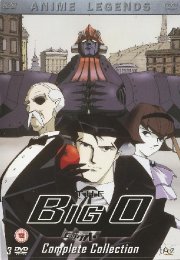
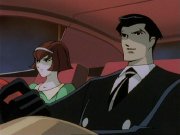
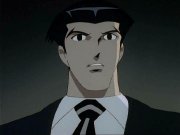
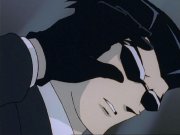
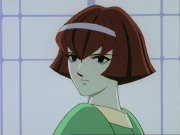
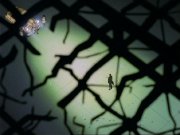
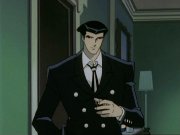
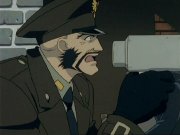
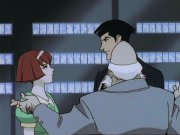
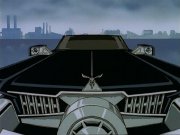
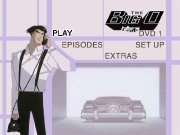
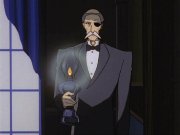

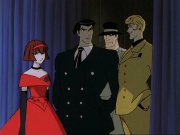
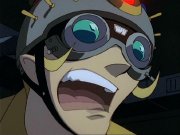
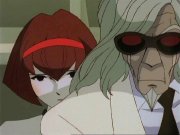
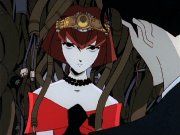
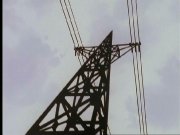
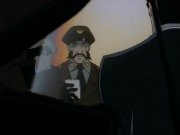
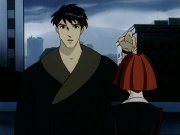
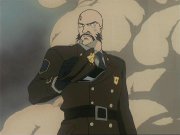
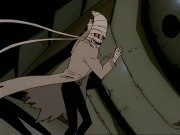
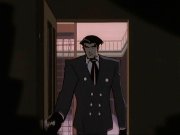
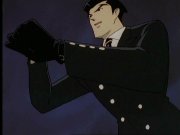
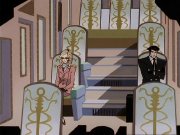
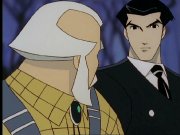
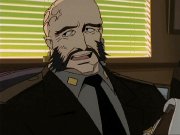
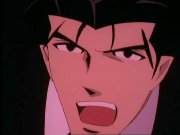
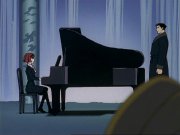

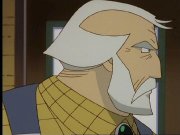
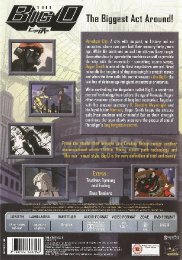








































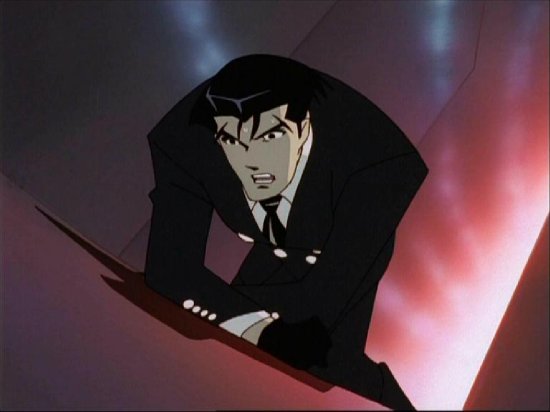

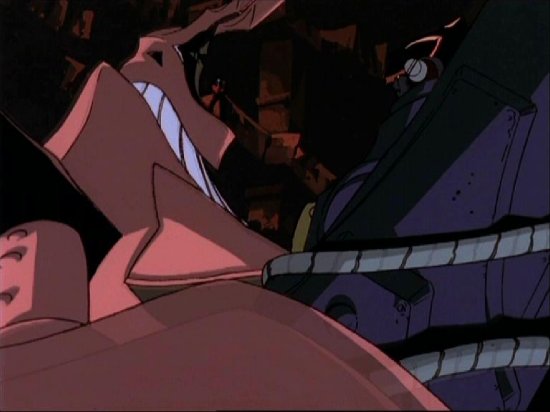
Your Opinions and Comments
Be the first to post a comment!